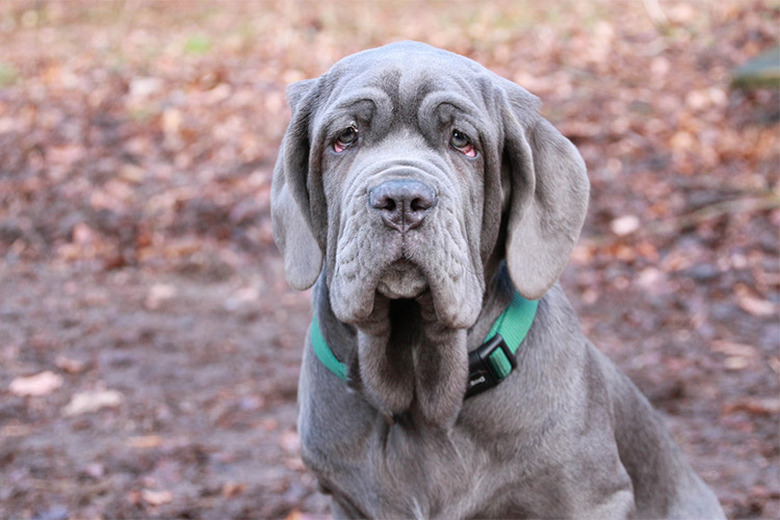Dogue De Bordeaux Vs. Neapolitan Mastiff
The Neapolitan mastiff and dogue de Bordeaux, or Bordeaux mastiff, are both large dogs and members of the American Kennel Club's working group. Both dogs can be described as massive and powerful, and both make excellent guard dogs, but there are many differences between the two breeds.
History and heritage
History and heritage
The dogue de Bordeaux is an ancient breed from the area that would become France. Their exact origin is unknown, although there are theories that the breed descended from the Neapolitan mastiff or other mastiff breeds. Throughout history, the dogue de Bordeaux filled many roles. The breed was used as a fighting dog, guard dog, and livestock drover. The breed's claim to fame came when a dogue de Bordeaux was featured in the 1989 film "Turner & Hooch," starring Tom Hanks. Despite the breed's ancient origins, the dogue de Bordeaux wasn't recognized by the American Kennel Club until 2008.
Neapolitan mastiffs, or mastinos, have a history dating back to 700 B.C. They served as war dogs and gladiators during the Roman empire. Throughout history and to current times, these dogs are powerful and effective guard dogs.
Dogue de Bordeaux breed standard
Dogue de Bordeaux breed standard
A very large breed, the male dogue de Bordeaux size is 23 to 27 inches tall, while females measure 23 to 26 inches tall. Males weigh 110 pounds or more, while females weigh 99 pounds or more. The dogs have a massive head and well-proportioned body that is just slightly longer than they are tall.
The dogs have a wrinkled face and thick, loose skin on the body but no excessive wrinkling. Dogue de Bordeaux colors include shades of fawn, from red to light fawn. Small white markings are acceptable on the chest, throat, and toes.
Neapolitan mastiff breed standard
Neapolitan mastiff breed standard
The Neapolitan mastiff is even bigger than the dogue de Bordeaux. Male mastinos grow 26 to 31 inches tall and weigh 150 pounds, while females grow 24 to 29 inches and weigh 110 pounds. They also have a massive head but have more extensive wrinkles and folds and loosely hanging lips.
They have a short coat that comes in shades of black, mahogany, tawny, and gray. Dogs of any color may be brindle, and white markings on the chest, neck, underside, and toes of the dog are allowed.
Differences in temperament
Differences in temperament
While both breeds have the appearance and personality to be excellent guard dogs, there are some differences to consider. The mastino is described as dignified and watchful, while the dogue de Bordeaux is considered affectionate and courageous. Both breeds are loyal. The dogue de Bordeaux is more affectionate than the Neapolitan mastiff, but both breeds require supervision around children and other dogs.
The dogue de Bordeaux has a medium energy level and needs daily activity. However, high-impact activities, like jumping, should be avoided, especially in dogs under 18 months of age and senior dogs. They tend to be sensitive but agreeable in training, so be consistent and use positive reinforcement.
The Neapolitan mastiff has a bit less energy than the dogue de Bordeaux, and they also tend to be a bit more stubborn during training sessions. These dogs typically only bark to alert, while the dogue de Bordeaux will bark much more often.
Common health concerns
Common health concerns
There are several medical conditions to which the dogue de Bordeaux breed is susceptible, including bloat, cancer, epilepsy, heart disease, and hip and elbow dysplasia. The average life span of the breed is five to eight years.
Some common health problems in Neapolitan mastiffs include bloat, cherry eye, and hip dysplasia. They do not typically have skin problems. The life expectancy of these dogs is seven to nine years, a bit longer than the dogue de Bordeaux.
